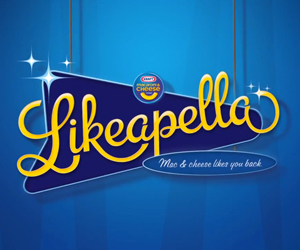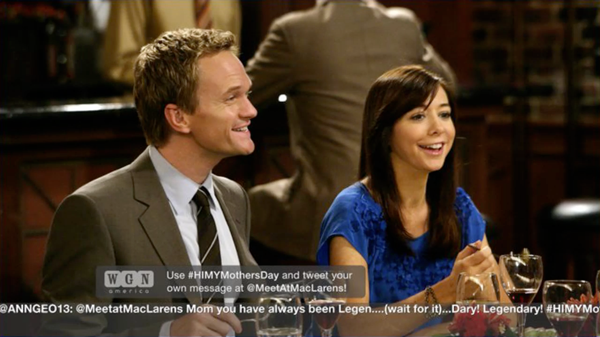 Great user-generated content (UGC) should not exist in a vacuum—it should be reused, when and where appropriate, to bring color and authenticity to a brand’s marketing.
Great user-generated content (UGC) should not exist in a vacuum—it should be reused, when and where appropriate, to bring color and authenticity to a brand’s marketing.
As brands expand their social-media footprints, many have also (smartly) placed more emphasis on engaging with their fans. As a result, they’ve begun proudly featuring selected consumer contributions in print, TV and online advertising. Dedicated fans often create a gold mine of content that’s just waiting to be explored, and in due course, brands have begun to dip into this resource. It’s the easiest and most direct way to build relationships with customers, because their passion for their favorite brands makes them happy to respond and share their stories—messages that are infinitely more compelling than what the brand might say.
Here are some great ways to use freely made consumer-generated content from social channels to great effect.
#1: Create Brand Videos Dedicated to Fans
The Facebook content for Kraft Macaroni and Cheese primarily revolves around children, cartoons, corny jokes and noodle artwork. And while this captures the brand personality perfectly, we can probably agree that it’s not toddlers that make up the now 1,091,612+ Likes for the page. To show appreciation for the 4,632 adult fans that Liked a particular post, Kraft came up with “Likeapella,” a YouTube video and personal thank-you note to all of them.
By acknowledging every single person that Liked the post, Kraft showed fans that their interaction with the brand doesn’t go unnoticed. When everything is looking great, it’s easy to neglect your satisfied customers and keep the status quo. But this video reminded Kraft customers that they are relevant to the brand’s success at all times, not just when they are unhappy or giving negative feedback.
In the post-advertising age, consumers don’t like to just listen in on a one-way conversation. They want to be part of the conversation—which is why they head to social-media platforms in the first place. So the virality of this campaign raises the question, Is retweeting or Liking user content enough nowadays? No, it’s not enough to give a nod to consumer content, especially when brands like Old Spice are making marriage proposals on behalf of fans. Consumers are looking for that extra level of engagement—they want brands to take the time to personalize responses and feature their content as part of their brand voice.
#2: Air Fans’ Tweets on TV
While brands regularly ask questions of consumers in order to engage them with social media, rarely are those consumers’ responses are put to any real use. By actually using fan tweets during live programming, however, brands are able to increase engagement, viewership and interaction.
In honor of Mother’s Day, WGN America (full disclosure: a Story Worldwide client) created the How I Met Your Mother’s Day Marathon for fans of the How I Met Your Mother TV show and encouraged them to get involved. Using Facebook and Twitter, WGN America asked followers to send in photos of their mothers accompanied by a brief message. The top fan quotes and photos aired during the marathon.
This campaign made watching the marathon a much more personal experience for the fans that tuned in, because their funny or touching life stories became as important as the fictional ones on the show. Even if your photo wasn’t chosen to be aired, it’s still public on the social platform it was submitted to. In this way WGN America encouraged fans to be passionate about the show but also acknowledged that they are emotional beings with families and loved ones.
For Shark Week’s 25th anniversary this year, the best #SharkWeek fan tweets were scrolled across the bottom of the screen in the 9 p.m. to 10 p.m. time slot. “We’ve got this primary audience, and they don’t just want to watch; they want to engage,” said Miguel Monteverde, vice president of digital at Discovery Channel. “We’re hoping the audience will feel as though they’re not just…passively engaged but are part of the experience.”
The result was 10 hours of programming that incorporated real fans’ commentary, allowing them to feel more involved with the event and the brand. Although Shark Week generally has a cultlike following, engagement was particularly high this year because fans actively partook in what they saw on-screen and were encouraged to have opinions about it.
#3: Turn Fans’ Videos Into Branded Content
Target’s latest television spot, “Acceptance,” uses home videos of real students as they open their college acceptance letters.
Target took storytelling to a whole new level by using footage of real users to create an emotional branding effect. This commercial tells a compelling story that is made even more engaging by the use of real people—not actors. The overwhelming response over Twitter captured exactly how touched people were by this commercial: there were a whole lot of tears. Differentiation for a superstore like this is key, so, naturally, pulling at consumers’ heartstrings is the best way to build strong relationships.
Chobani also has been using real consumers’ stories to make TV spots and online videos on social media. Fans submit their “Real Love Stories,” and Chobani features the best videos once a week on its Facebook page. Chobani also weaves all its social channels together to create a cohesive vision and allow them to interact. Facebook fans are directed to Twitter or are linked to the YouTube channel to view the brand videos. This furthers interaction because fans can quickly move from one page to the next and become engaged at every level that the brand offers.
#4: Respond to Tweets in Person
Wheat Thins responded to fans’ tweets in a dramatic way with its “The Crunch Is Calling” campaign. Unsuspecting fans were approached by a host and camera crew delivering a truckload of Wheat Thins and addressing their social-media requests for the snack cracker.
This level of response to consumers shows that Wheat Thins is not only listening but also taking action to show that they are valued. If publicly wishing for more Wheat Thins can result in a truckload’s being dropped off on my doorstep, I’m much more likely to continue talking about the brand. And that’s exactly what Wheat Thins was able to ensure. Fans who received free products continued the conversation online, and then others shared their story. When the brand encountered unbelievers, it took the time to prove to them that the campaign was real and not scripted. But the best move by Wheat Thins was to create an entire campaign out of this idea. It fully committed to this type of interaction with consumers instead of making it a onetime thing.
Why does it work?
Social media has bridged a huge gap in the two-way communication between brands and consumers, and it only continues to elevate these interactions. Customer service, discussion about products and branded content are all the more accessible via social-media channels. But the brands on our list have made a concerted effort to show appreciation for their consumers through good and bad. Users feel good when they are openly appreciated, and this feeling will only foster their future engagement with a brand.
These interactions also make a brand look savvy when it comes to digital platforms and social media. If it’s considered abnormal for an individual not to have Facebook, it’s certainly abnormal for a brand to be incompetent when it comes to social media, especially a brand that has the time and money to dedicate to these channels. Incorporating user content into traditional advertising adds credibility to the way a brand makes use of social platforms.
At the moment there is a limit to the extent that brands will integrate user-generated content with their own. Until they start pushing this limit, however, it’s hard to judge how consumers will respond. For now it’s too risky to overstep boundaries and go belly-up, so step lightly.
Which other brands are doing a good job of incorporating user content into their advertising? Do you think that this type of interaction will become too difficult to maintain, or is it the future of advertising?




Pingback: 3 Carmakers Embracing Brand Stories via @PostAdvertising
Pingback: When Co-Creation Becomes The Beating Heart Of Marketing, Companies Win « Building Social Bridges
Pingback: James Mallorie : Exploring my life » Blog Archive » 4 Businesses Leveraging Storytelling With Images
Pingback: 4 Businesses Leveraging Storytelling With Images | Social Media Examiner
Pingback: 4 Businesses Leveraging Storytelling With Images « Buy Facebook Fans,Twitter Followers,YouTube Views,Google Plus Votes
Pingback: Four Businesses Leveraging Storytelling With Images | CutSlack
Pingback: 7 Ways to Use Facebook to Display Brand Personality - Marketing Action Blog - Act-On
Pingback: Don’t Miss the Chance to Leverage User-Generated Content, Portfolios - Mary Lou Denny: Educating The Trade